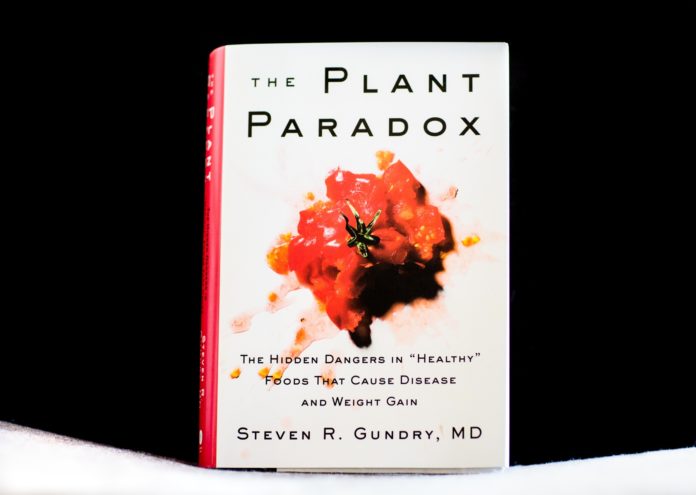
Plants, some of them anyway, don’t want us to eat them. It seems they have developed a system of defenses that involve proteins called lectins. The most famous lectin is gluten, but there are many others. Evolutionarily speaking, animals and ancient humans knew not to eat certain foods, or to treat them in a way that minimizes the lectin’s impact. For instance, Italians peel and seed their tomatoes—which is where the lectins are concentrated. According to Gundry, in The Plant Paradox, these lectins cause problems in our gut. This in turn is the cause of all manner of auto-immune disorders, blood sugar issues etc.
Gundry has serious credentials: Yale undergrad, head of cardiothoracic medicine at Loma Linda School of Medicine and considerable experience as a research scientist. It’s impossible to eat an entirely lectin-free diet, but not so hard to avoid some of the worst offenders: cashews, grain fed animals, nightshades and farmed fish. Wheat is an interesting story- turns out that the sourdough process destroys the lectins, and most interestingly, brown bread is packed with tons of lectins. That healthy seeded whole wheat may not be all that great for you. Fun fact: 50% of TUMS manufactured goes towards cows who are fed grains rather than grass to keep them from getting sick eating the high lectin feed. Cows don’t have evolutionary history of a gut set up to deal with the high lectin grains.
This book goes into the library of AGEIST recommended longevity literature. It’s part of the puzzle that we, as individuals, need to keep working at understanding what foods work for us and what don’t.




[…] Lectins […]
[…] a desire to stay away from corn, either because of its high glycemic index, or increasingly, its lectin content. But what about our matinee favorite delight, pop-corn? Do we really need to deprive ourselves? […]